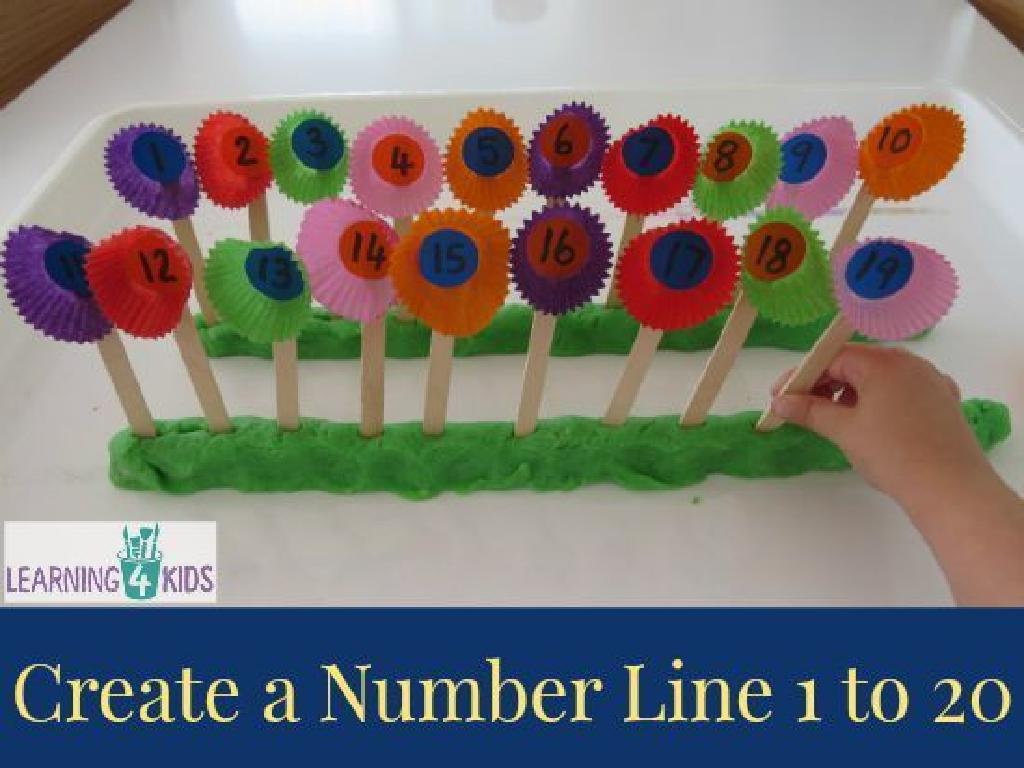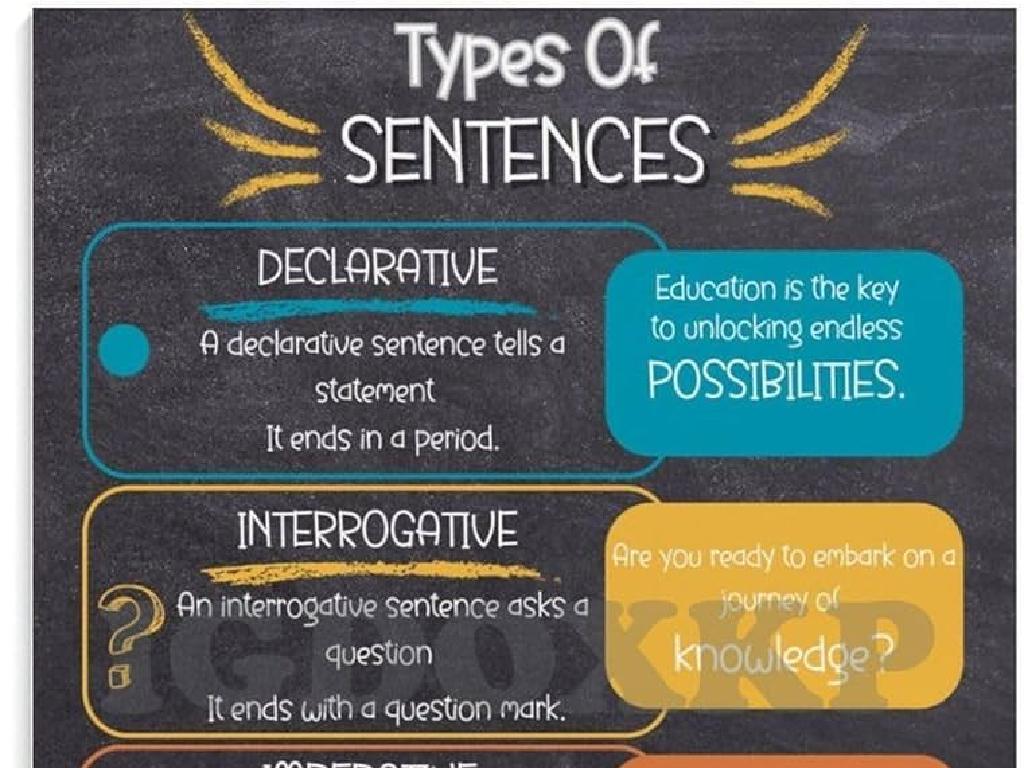Identify Equivalent Linear Expressions Ii
Subject: Math
Grade: Seventh grade
Topic: Equivalent Expressions
Please LOG IN to download the presentation. Access is available to registered users only.
View More Content
Welcome to Equivalent Expressions!
– Grasping equivalence concept
– Equivalence means equal value or function, not necessarily the same appearance.
– Defining Equivalent Expressions
– Expressions that simplify to the same value, even if they look different.
– Significance in mathematics
– They allow us to simplify problems and find solutions more efficiently.
– Exploring examples
– For instance, 2(3x + 4) and 6x + 8 are equivalent.
|
This slide introduces the foundational concept of equivalent expressions in mathematics. Start by explaining that equivalence refers to different expressions that have the same value or function, even if they don’t look the same. Emphasize the importance of understanding equivalent expressions as they are crucial for simplifying algebraic equations and solving problems more effectively. Provide examples to illustrate how different expressions can be equivalent, and encourage students to think of their own examples. This understanding is key for their future studies in algebra and beyond. Make sure to clarify any misconceptions about the appearance of expressions versus their value.
Recap: Identifying Equivalent Expressions I
– Review basic equivalent expressions
– A quick recap of the previous lesson’s key points.
– Explore simple expression examples
– For instance, 2(x + 3) and 2x + 6 are equivalent.
– Class activity: Share your examples
– Each student thinks of an example to present.
– Understanding equivalence importance
|
Begin the class with a brief review of the previous lesson, focusing on the fundamental concept of equivalent expressions. Use simple examples to illustrate how expressions can be manipulated yet still remain equal in value. Engage the class by inviting students to participate and share their own examples of equivalent expressions. This activity will help reinforce their understanding and allow for peer learning. Emphasize the importance of recognizing equivalent expressions as a foundational skill in algebra, which will be crucial for solving equations and simplifying expressions in more advanced topics.
Identifying Equivalent Linear Expressions II
– Criteria for expression equivalence
– Two expressions are equivalent if they simplify to the same value for any variable substitution.
– Variables and their roles
– Variables represent unknown numbers and allow for generalization in expressions.
– Properties of operations
– Use commutative, associative, and distributive properties to manipulate expressions.
– Creating equivalent expressions
– Apply properties to rewrite expressions in different, but equivalent forms.
|
This slide aims to deepen students’ understanding of equivalent expressions by exploring the criteria that make two expressions equivalent, the role of variables, and the use of properties of operations. Emphasize that equivalent expressions will always have the same value regardless of the variable’s value. Highlight the importance of variables in creating expressions that can represent a range of numbers. Discuss how the commutative, associative, and distributive properties can be used to create equivalent expressions, and provide examples of each property in use. Encourage students to practice by giving them expressions to rewrite in equivalent forms, ensuring they grasp the concept of equivalence in linear expressions.
Combining Like Terms
– Define like terms
– Terms with the same variable parts, e.g., 5x and 3x
– Steps to combine like terms
– Add or subtract coefficients of like terms
– Simplify expressions examples
– Example: 2x + 3x becomes 5x
– Practice combining terms
|
This slide introduces the concept of combining like terms as a fundamental skill in simplifying algebraic expressions. Begin by defining like terms as terms that have identical variable parts, which means they have the same variables raised to the same power. Explain the process of combining like terms by adding or subtracting their coefficients. Provide examples of simplified expressions, such as turning 2x + 3x into 5x by adding the coefficients. Encourage students to practice with various expressions, reinforcing the concept that only like terms can be combined. This will prepare them for more complex algebraic manipulations.
The Distributive Property
– Understanding distributive property
– It lets you multiply a sum by multiplying each addend separately and then add the products.
– Apply distributive property
– Use it to rewrite expressions: e.g., 3(x + 4) becomes 3x + 12
– Examples with variables
– For 2(a + 3b), distribute 2 to get 2a + 6b
|
The distributive property is a cornerstone in algebra that allows us to simplify expressions and solve equations. It states that multiplying a sum by a number is the same as multiplying each addend by the number and then adding the products. This slide will introduce the concept and show how to apply it to create equivalent expressions. Provide clear examples with variables to illustrate the process. Encourage students to practice by distributing coefficients over terms within parentheses and combining like terms to form equivalent expressions. This foundational skill will be crucial for their success in algebra.
Practice: Identifying Equivalent Expressions
– Work through example problems
– Let’s solve problems as a class and understand each step
– Identify equivalent expressions
– Find expressions that simplify to the same value
– Discuss strategies for equivalence
– Share tips like combining like terms and using the distributive property
– Apply strategies in practice
– Use learned strategies to solve new problems
|
This slide is aimed at reinforcing the concept of equivalent expressions through guided practice. Start by solving example problems as a class, ensuring that students understand each step of the process. Encourage students to actively participate in identifying expressions that are equivalent by simplifying them. Discuss various strategies such as combining like terms, using the distributive property, and factoring. Emphasize the importance of these strategies in recognizing equivalent expressions. Finally, have students apply these strategies to new sets of practice problems, either individually or in small groups, to solidify their understanding. Provide immediate feedback and support as needed.
Class Activity: Equivalent Expression Challenge
– Break into small groups
– Simplify and match expressions
– Each group simplifies given expressions and finds equivalents
– Groups present their findings
– Explain reasoning behind matches
– Discuss how you determined equivalency, e.g., by combining like terms
|
This activity is designed to promote collaborative learning and reinforce the concept of equivalent expressions. Divide the class into small groups, ensuring a mix of abilities in each. Provide each group with a set of algebraic expressions to simplify and match with equivalent ones. This could involve combining like terms, using the distributive property, or factoring. After the activity, each group will present their matched pairs and explain the mathematical reasoning behind their decisions. As a teacher, circulate to offer guidance and ensure that each group is on the right track. Possible variations of the activity could include a timed challenge, a competition between groups, or having students create their own sets of equivalent expressions for others to solve.
Homework and Next Steps: Mastering Equivalence
– Homework on equivalent expressions
– Complete assigned problems on finding equivalent expressions
– Next lesson: Solving Equations
– We’ll use equivalent expressions to solve equations in our next class
– Practice with worksheets at home
– Use the worksheets to practice and solidify your understanding
– Reinforce learning through practice
|
For homework, students are tasked with exercises that reinforce their understanding of equivalent linear expressions. This will prepare them for the upcoming lesson focused on solving equations using these concepts. Provide a variety of problems in the homework to cater to different skill levels. The next class will build on this foundation, showing how these expressions are used in solving equations. Encourage students to complete the worksheets at home to practice, as repetition is key to mastery. The worksheets should include answer keys to allow for self-assessment. Remind students that making mistakes is a part of learning and to review their work for errors.






